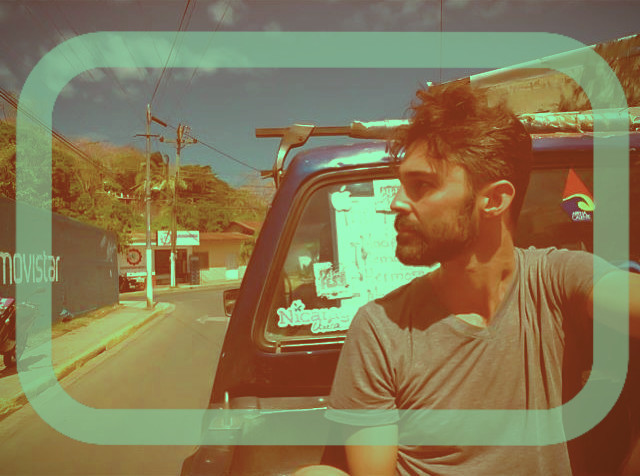“Caminante no hay camino, se hace camino al andar”, sings Joan Manuel Serrat, whose 1969 hit “Cantares” incorporates that amazing phrase from Spanish poet Antonio Machado, an icon from the Generation of ’98. It translates into: “Traveller, there is no path / it will come about as you travel”, and I bring it up because it signifies (at least, it is my perception) freewill and the desire to let our journey unfold…as we go forward.
With that said, Music is Prana was born out of the desire to showcase independent thought, and even though the name itself has the word “music” in it, we are open to all art forms. Today we get to feature New York based photographer Octavio Pires, a dear friend -and a true Caminante- whose photography is a testament of his desire to venture out into every corner of the planet and to use his camera to capture emotion, colors, and daybreaks. Is Octavio using his lens to convey a message/ capture stills of a story? Or perhaps, he is letting us enter the privacy of his own memories? We are about to find that out and more!
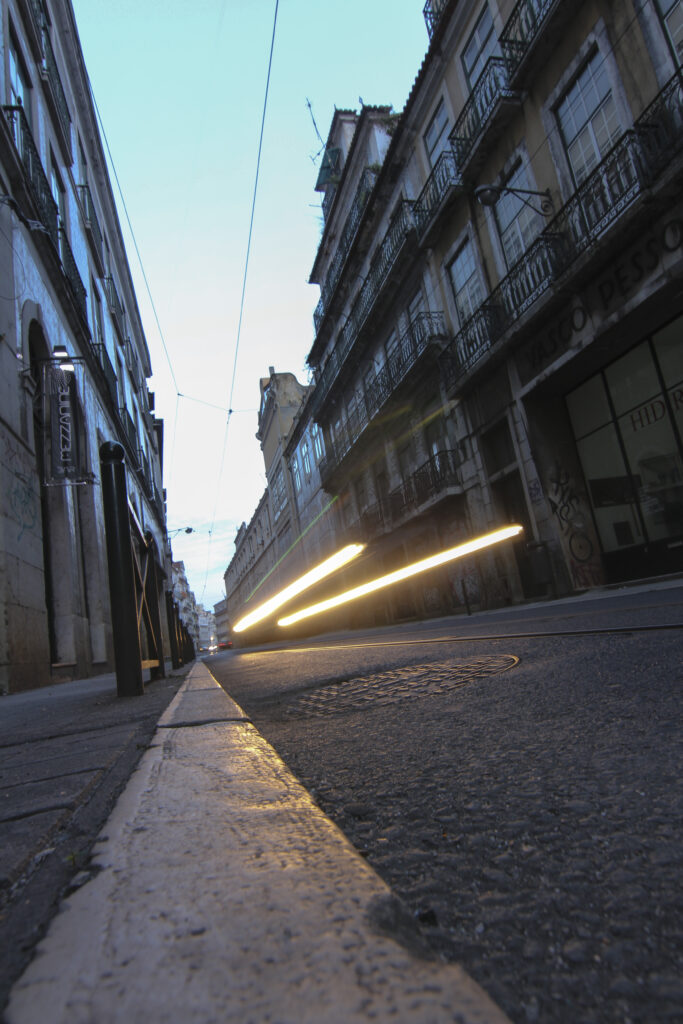
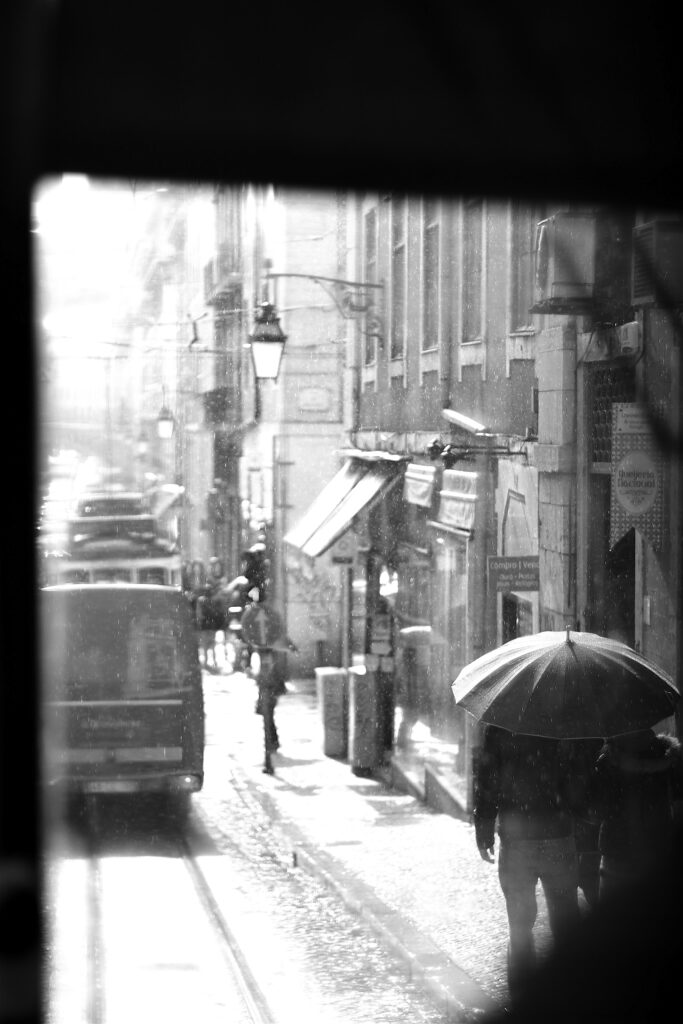
MY: As a musician myself, listening to Nirvana and the likes of Silverchair and Smashing Pumpkins made me want to pick up a guitar. More specifically, it was watching the video for the song “Tomorrow” by Silverchair what made me want to be in a band. Did you have such moment with photography? Tell us about the initial spark, and what did you want to capture with your camera? What were your early influences?
OP: Growing up my dad had a collection of old cameras lying around the house collecting dust with no film or batteries. I would use them to frame everything and everyone around me with nothing more then the view finder. Guess these were my first lessons in composition. Later in life I spent a good amount of time assisting a girlfiriend on some photo gigs quickly finding my addiction for capturing emotion in candids.
«Composition is key»
MY: The first two pictures in this feature were taken in Lisbon, Portugal. We see an empty street where you manage to integrate triangles against the ground and the sky, whilst in the other picture the city is in motion under a set frame (could be a bridge). In both instances, walk us through your technique to incorporate organic shapes.
OP: Composition is key. I incorporate movement into the still and with that hope to tell a story or bring out an emotion. Both these were shot farely quickly trying to capture the emotion I felt in that specific moment. The first one being that magical Lisbon light and the next the energy of city romance through a trolley window.
«It’s all about framing a moment and it being a meaningful one«

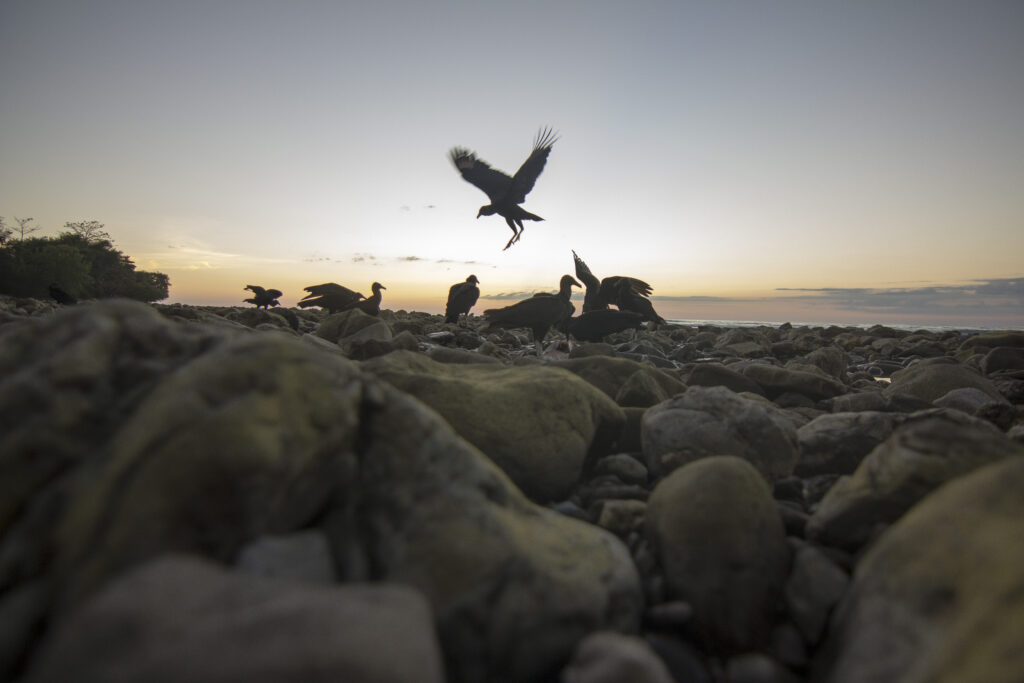
MY: Contrast and movement come to mind right away in the pictures above. The sky can be an endless source for different tones as well as contrast, and you combined it with rough (abandoned train car) and soft (birds) elements. How important were the lenses to achieve this so called “extra punch” in the pictures? Also, what is the symbolism behind the birds? I get it this is a zine, not therapy…heheh
OP: Very, but just like a good tennis player can win tennis matches with a wooden raquet a good photographer can shoot wonders with very basic lenses. It’s all about framing a moment and it being a meaningful one. Regarding the birds… sometimes I capture birds and sometimes they just enter my frame. I am also convinced I was a bird in a previous life so might feel a pull to shoot them more often then someone who was not.
«B&W can surely set a mood that color sometimes can not«
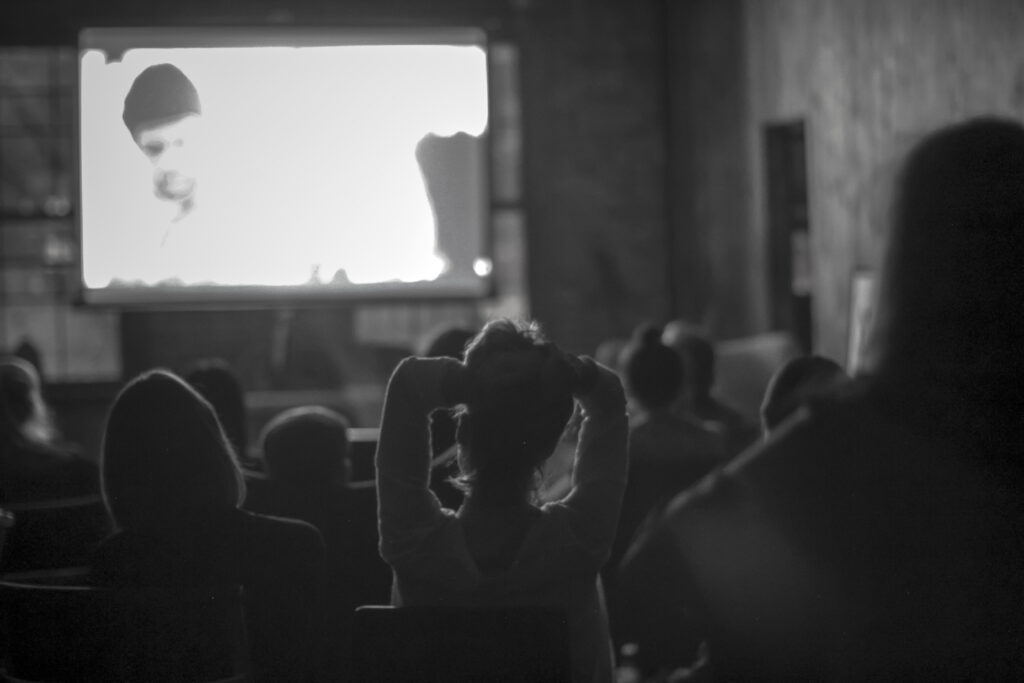
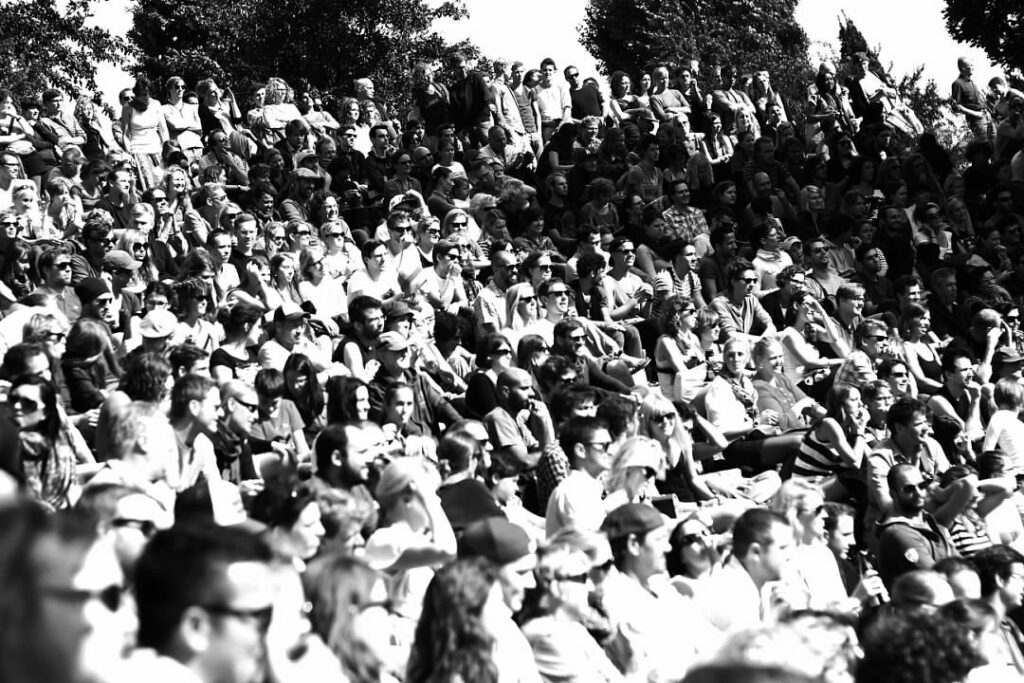
MY: This is where we enter the true Freudian part of therapy the feature…which has since morphed into an interview or even better: a conversation. By removing color, I believe you want us to focus on particular subjects, which are the girl with her arms up in the theatre and the crown with a collective grin. Did you feel that film was boring too??? Kiiiidddddiinng…Would you say that you used black & white to direct viewers to specific targets? If so, can light and shadow have limitations? Or can they be as expressive (attention magnets) as colors?
OP: These two images in color just would not feel the same. I felt an attraction to that gal playing with her hair. Something about her movement in the mid depthness of the room drove me. She became the center of my attention and kinda felt like that is what she wanted. Having it black and white just feels a bit sexier to me. Yeah screw the film! Shooting the crowd in B&W ties the crowd together and creates a pattern like flow. In short B&W can surely set a mood that color sometimes can not.
«It’s all about being spontaneous»
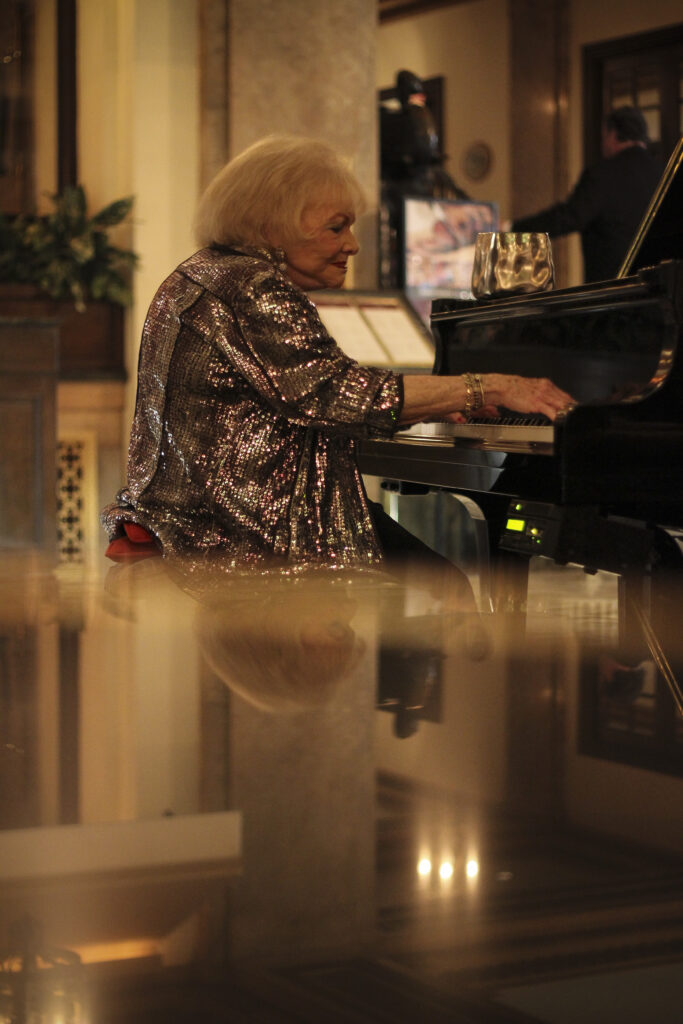
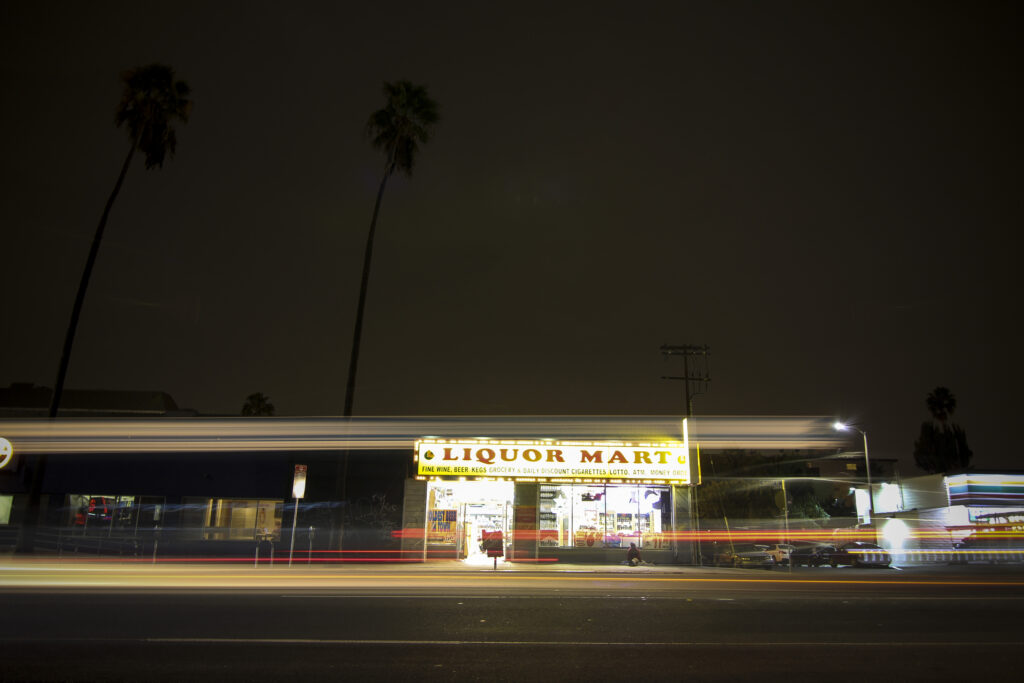
MY: Although quite different in nature, I find the pictures above to exemplify the concept of ‘unity’, where the reflection of the lady and the palm trees shrouded in the dark give both images a high degree of cohesion. So-called unified images usually come from a pre conceived idea. Did you take these two on the spot? Are there such things as spontaneous photos?
OP: If I were a photograper I would think of myself as a candid one. Most my photographs are shot on the spot, in manual, and without the use of artificial light. I find it sad when unable to capture that feeling which drives a photographer to want to shoot. But when you do it’s so satisfying. It’s all about spontaneous.
«Timing and yes balance is absolutely right when capturing the draw of the photograph«
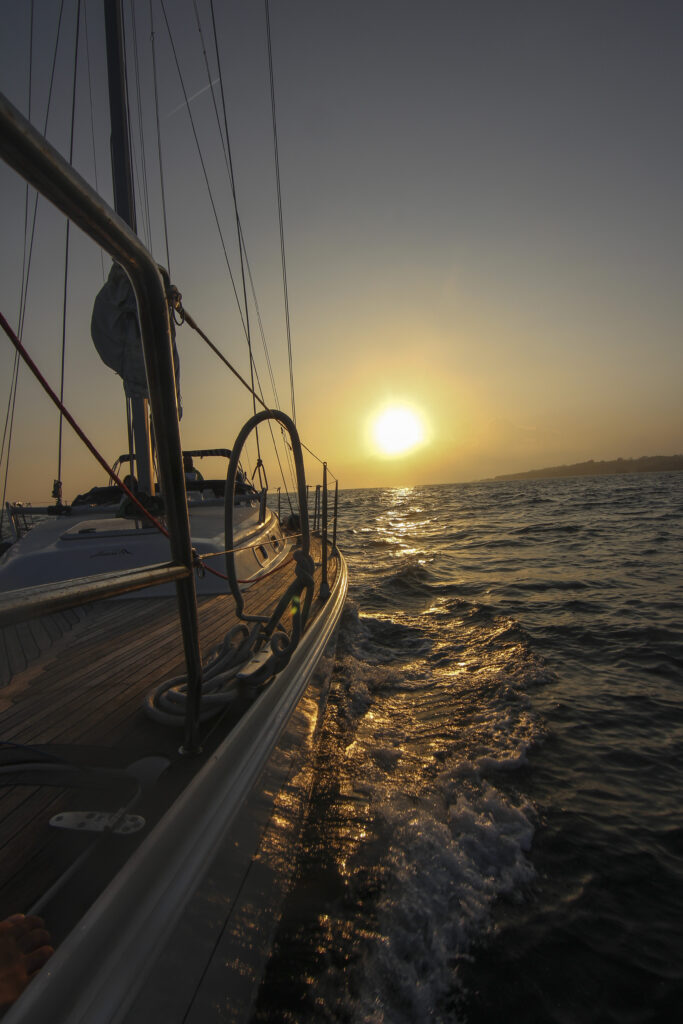
MY: As I stare at this photo, I highlight ‘balance’. All asymmetrical elements (waves, sunset and boat) contrast with each other impeccably. In many ways, this photo incorporates elements from your previous work in terms of lines, colors, light and textures. Perfectioning balance and the elements of symmetry & asymmetry in photography can be worked on over the years? Or they are something that the universe shares with us once in a while and we need to capitalize on right away?
OP: I don’t know what is more difficult shooting on a boat or capturing an authentic expression at a wedding. Capturing movement while on water is very much as hard as capturing a persons true emotion without the pucker for example. Timing and yes balance is absolutely right when capturing the draw of the photograph.
«As in Fado, we find love in sadness«
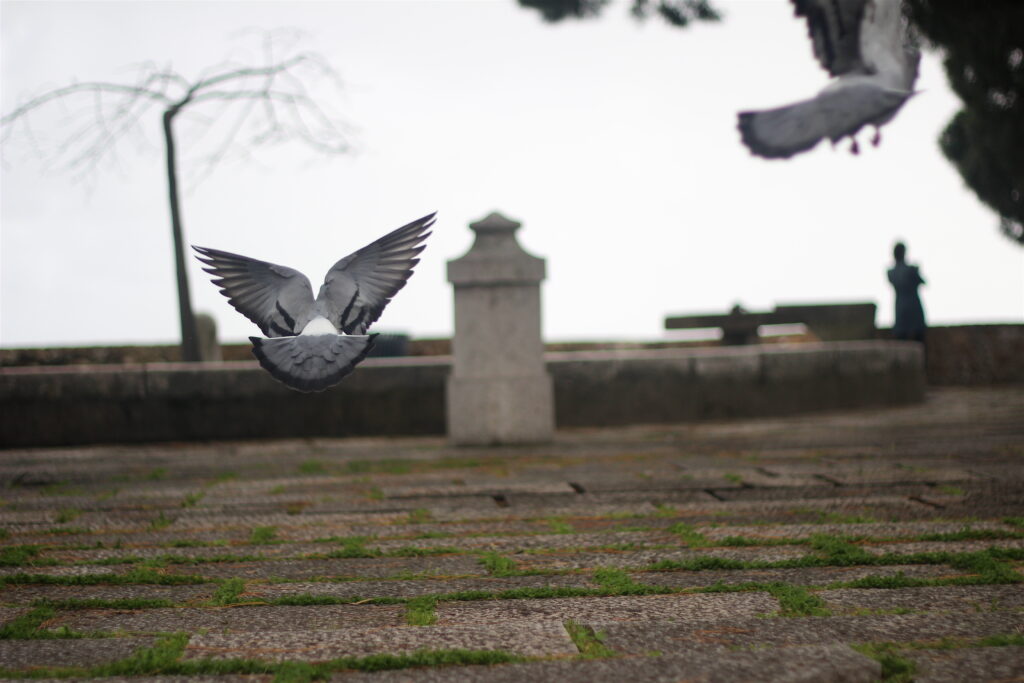
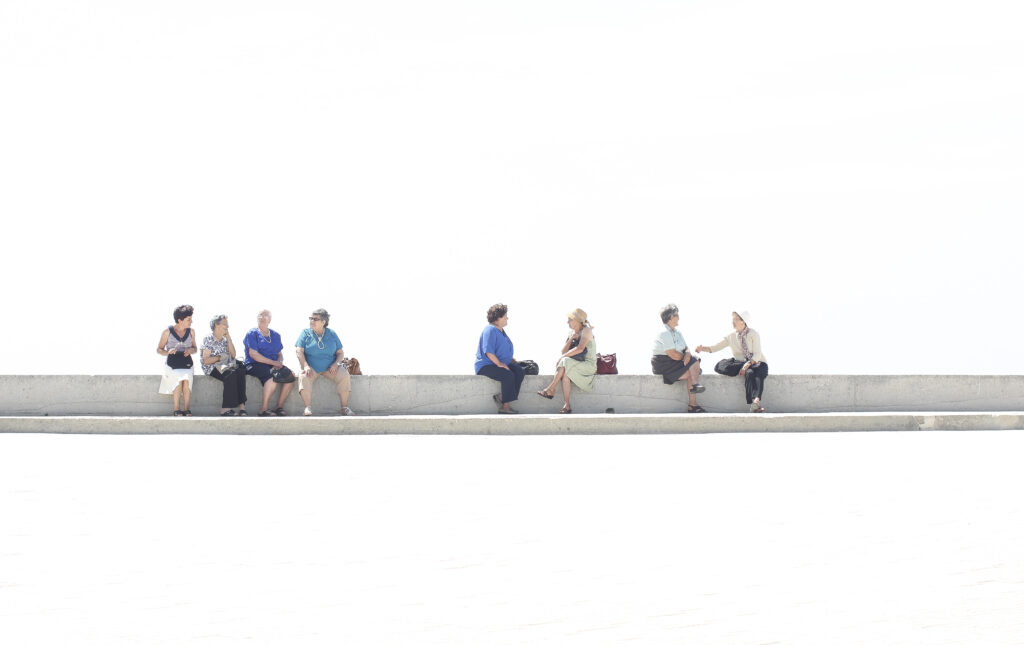
MY: Finally, let’s take on the mystic of these two photos. Taken in Portugal and intimate indeed. I take the liberty to also speak on behalf of the readers, please tell us what they mean to you. What feelings come about every time you’re there? Did you inadvertedly try to translate those while taking those pictures?
OP: Being portuguese, I’m tied to its history and in some sense have been in a relationship with this mystical place for most of my life. As in Fado, we find love in sadness and struggle but for some reason these two equate to romance. The pigeons add a second layer of romance to the pensive woman gazing out into the city streets and the retired women sit and chat on the seashore of Aveiro maybe pulled in by the pride of their rich fishing heritage in which there was much gain and loss.
Bonus!

Yes, there is a bonus!! Octavio has kindly shared with us a collection of songs that will be part of the first Music is Prana Spotify playlist. We’ve asked him to let us know what he is listening to at the moment with the hopes that these tracks will turn us into fearless Caminantes, just like him.
Catch more of Octavio’s work here:

